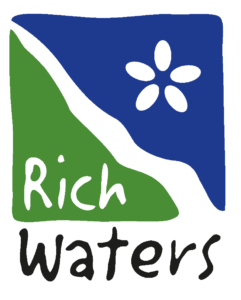A full report is available in Swedish
Summary
Background
Sub-project name: Strategy for Free Migration Routes
Start date: January 2017
End date: June 2024
Partners:
- County Administrative Board of Västmanland (LSTU)
- County Administrative Board of Örebro (LSTT)
- County Administrative Board of Uppsala (LSTC)
- County Administrative Board of Södermanland (LSTD)
- County Administrative Board of Stockholm (LSTAB)
Objective: The main goal is to establish a common and well-anchored action plan
for improving free migration routes for fish in watercourses within the Northern
Baltic Water District (NBWD).
Expected results:
- A mapping of different stakeholders’ positions regarding free fish
migration routes. - GIS-based mapping for identifying, planning, and prioritizing measures
for free migration routes. - Case studies documenting the design, efficiency, and costs of various
measures to support planning and implementation of free migration routes
for fish.
Effective measures require consensus, collaboration, and cooperation to ensure the best outcomes for biodiversity. The approach includes experience exchange, methodology development, and cultural heritage considerations. Good decision making requires strong data foundations, which have been explored through
various studies.
Summary of results
Environmental Impact
- The exact number of fish reaching their spawning and feeding areas due to the project is difficult to quantify, but awareness and knowledge about free fish migration routes have clearly increased.
- The project has compiled and made existing knowledge accessible while also developing new insights into effective measures.
- The sub-project has contributed to water management by raising awareness about migration barriers and their impact on ecological status.
- Removing migration barriers was also identified as a potential measure to mitigate climate effects, particularly in cases of flooding
Increased Knowledge and Capacity
- Knowledge about measures for free migration routes has significantly increased, making the issue more established and understood.
- The results are valuable for multiple stakeholders, including municipal officials, policymakers, county administrative boards, consultants, landowners, and interest organizations.
- The project has produced knowledge bases and highlighted successful measures as inspiration, potentially leading to further initiatives.
Effects of Collaboration and Networking
- Collaboration and networking have been among the most valuable outcomes of the project. Regular meetings with various stakeholders facilitated experience sharing, guidance, and monitoring of external developments.
- Seminars, lectures, and workshops have increased knowledge and contributed to joint solutions.
- The Mälaren Water Conservation Association will take over the network to ensure its continued work.
Ripple Effects
- While it is difficult to directly link specific measures in the district to the sub-project, the work has likely improved decision-making processes and contributed to more actions for free fish migration routes.
Conclusion
The project has had a significant impact on awareness, knowledge, and networking around free fish migration routes, even though direct effects are difficult to measure. It has established a solid foundation for future initiatives and collaborations


